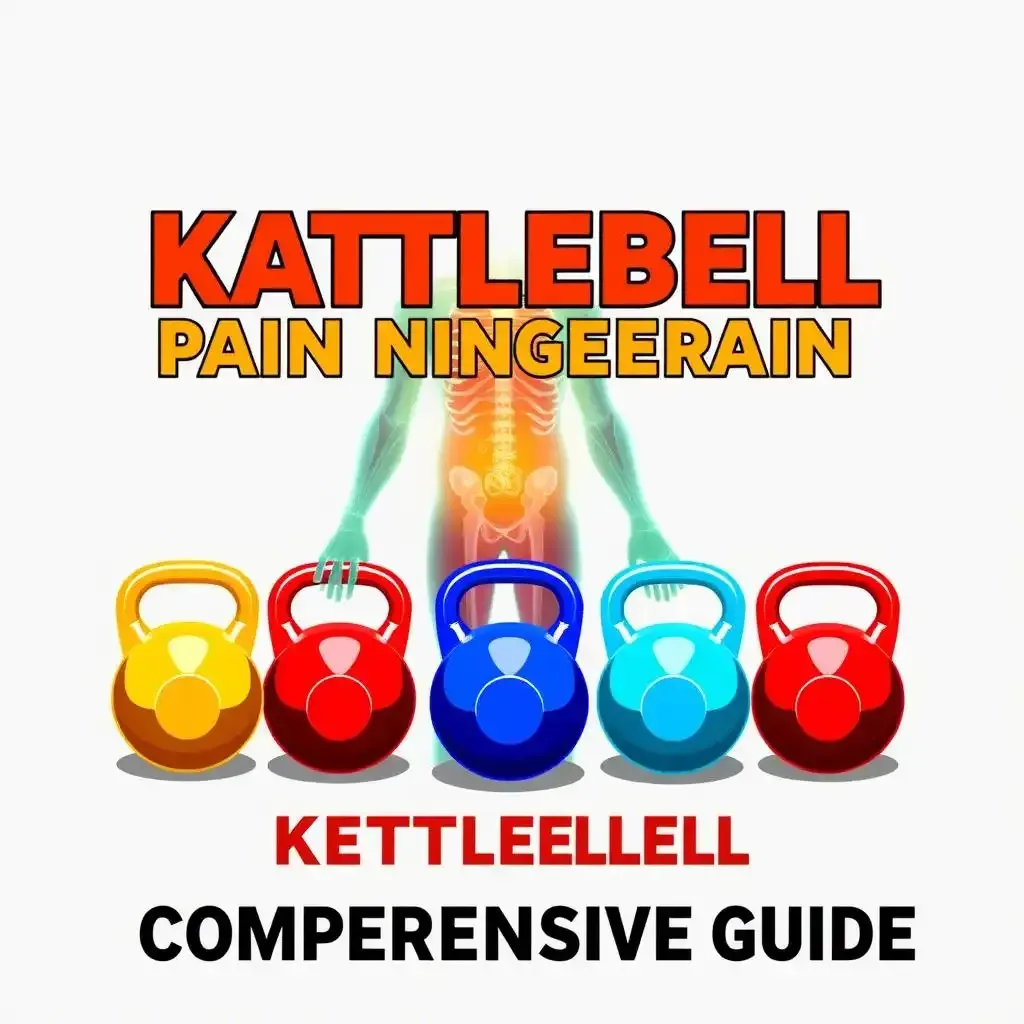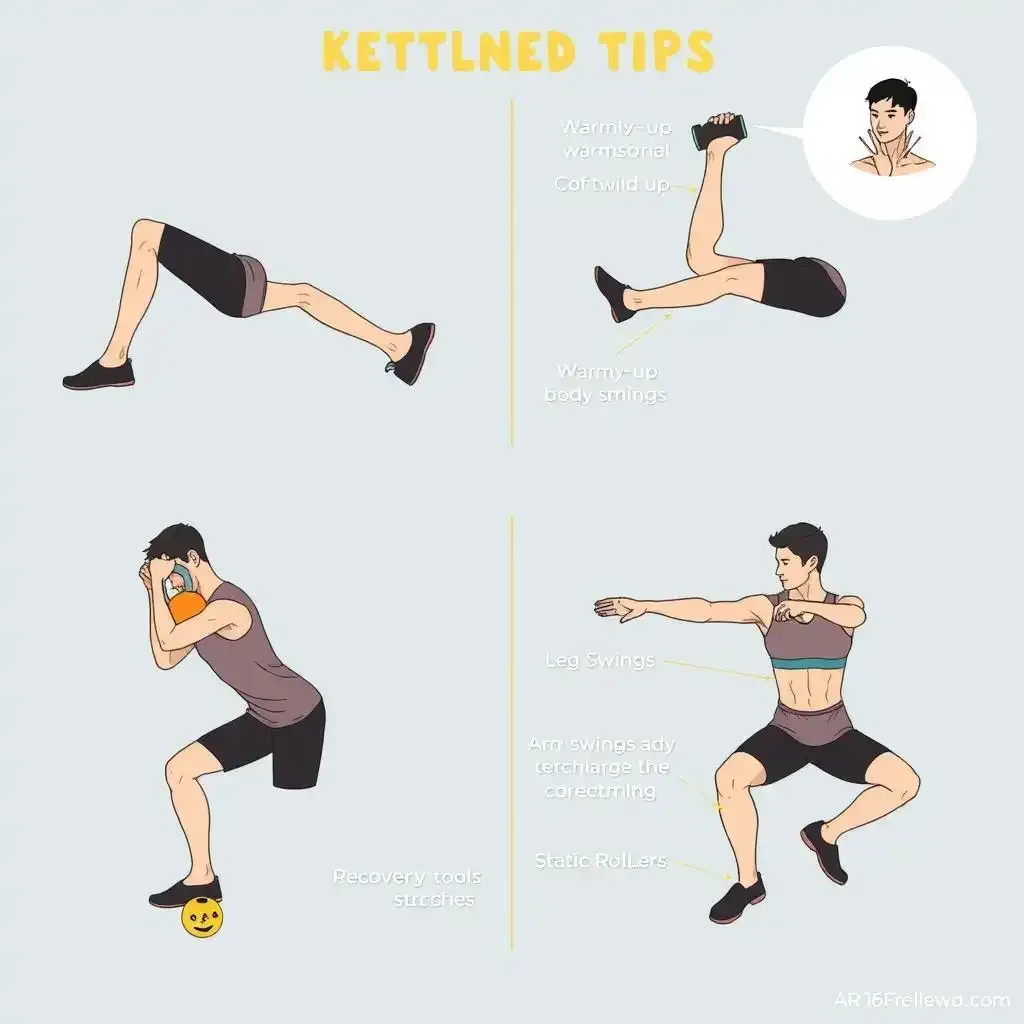Table of Contents
Are you battling nagging back pain or struggling with stiff shoulders? Do you dream of a stronger, more flexible body, but fear that exercise will only make things worse? Many people dismiss kettlebell training as something only for hardcore athletes, but the truth is, kettlebells can be a surprisingly effective tool for pain management. At kettlebellworkout.homes, we believe in the strength of functional fitness, and that includes using kettlebells to alleviate pain and improve overall well-being. This article will explore how kettlebells can target specific pain points like back and shoulder issues, offering practical exercises and crucial safety tips to help you achieve a pain-free life. We’ll cover safe techniques, recovery strategies, and even address some common misconceptions about kettlebell training and pain. Get ready to learn how kettlebell pain management can transform your health process!
Kettlebell Pain Management: A Comprehensive Guide

Kettlebell Pain Management A Comprehensive Guide
Understanding Kettlebell Pain Management
Hey there, fellow kettlebell enthusiast! So you're diving into the world of kettlebell pain management? Awesome! I've been using kettlebells for years, and let me tell you, they're not just for building muscle—they're seriously great for easing aches and pains. Think of it like this: your body's a finely tuned machine, and sometimes it gets a little rusty. Kettlebells help you oil those joints, strengthen those weak spots, and get everything moving smoothly again. It's not a magic bullet, but it's a powerful tool. And honestly, who doesn't love swinging a kettlebell? It's way more fun than taking another boring pill!
Now, I know what you might be thinking: "Kettlebells? That sounds intense! Won't that hurt my already sore back?" Not if you do it right! The key is proper form and gradual progression. We’re not talking about Olympic lifting here; we're about controlled, mindful movements that strengthen your core, improve your posture, and build stability. Think of it like learning to ride a bike—it takes time and practice, but once you get it, it’s exhilarating. Remember that feeling of accomplishment? That's the goal here! If you’re a beginner, it’s totally fine to check out our guides on easy kettlebell exercises and kettlebell basics to get started. Trust me, your body will thank you!
- Start slow and light.
- Focus on proper form.
- Listen to your body!
Kettlebell Exercises for Pain Relief
Let's talk specifics. Many people suffer from back pain, and kettlebells can be a lifesaver. Exercises like the kettlebell swing, done correctly, strengthen your core muscles—your body's natural support system—without putting excessive strain on your spine. Imagine your core as a sturdy corset, holding everything in place. The swing helps build that corset. I've personally seen incredible results in my clients who were initially hesitant but embraced the low-impact, high-reward nature of the kettlebell swing. It's not just about the back, either. Kettlebell exercises can also help with shoulder problems, improving mobility and range of motion. For example, the Turkish get-up is a full-body exercise that can improve shoulder stability and overall strength. It's like a full-body reset, helping you find your balance and control.
But remember, every body is different. What works for one person might not work for another. If you have specific concerns, chat with your doctor or a physical therapist before starting any new workout routine. They can help you create a plan that's safe and effective for your individual needs. There are so many resources available to learn more about kettlebell exercises for back pain, and I highly recommend checking them out. Don’t forget to warm up properly before each workout and cool down afterward—think of it as prepping your engine before a drive and letting it cool down after.
Exercise | Focus | Benefits |
|---|---|---|
Kettlebell Swings | Hips and Core | Improved posture, core strength |
Turkish Get-Up | Full Body | Shoulder stability, balance |
Kettlebell Exercises for Back Pain Relief

Kettlebell Exercises For Back Pain Relief
Let's examine into how kettlebells can be your best friend when it comes to back pain relief. The kettlebell swing is a classic exercise that's perfect for this. It's like giving your back a gentle massage with every swing. The movement engages your glutes, hamstrings, and core, but the secret is in the hip hinge. This action helps you strengthen your lower back without straining it.
Think of the kettlebell swing as a way to retrain your body to move properly. When you swing the kettlebell, you're teaching your body to use your hips and core for ability, rather than just your back. This can significantly reduce the strain on your spine and help you develop better posture. If you're just starting, check out our for some basics.
- Start with a light kettlebell.
- Focus on a proper hip hinge.
- Keep your core engaged throughout the movement.
Another fantastic exercise for back pain is the kettlebell deadlift. It's a bit like the kettlebell swing but with a different emphasis. The deadlift is all about building stability and strength in your lower back and hamstrings. When you do it right, it can be a game-changer for chronic back issues.
Imagine you're picking up a heavy grocery bag. You don’t want to bend from your back, right? You use your legs and core. The kettlebell deadlift teaches you to do just that. It helps you build a strong foundation and reduces the risk of back injuries. For more advanced exercises, you can explore our guide.
Exercise | Focus | Benefits |
|---|---|---|
Kettlebell Swing | Hips and Core | Improved posture, core strength |
Kettlebell Deadlift | Lower Back and Hamstrings | Stability, reduced risk of injury |
Kettlebell Workouts for Shoulder Pain Management

Kettlebell Workouts For Shoulder Pain Management
Gentle Rotations and Raises
Okay, so you're dealing with shoulder pain? Don't worry, you're not alone! Lots of people struggle with this. The good news is, kettlebells can actually be really helpful. Think of your shoulder as a complex ball-and-socket joint. It needs to be strong and stable, but also flexible and mobile. That's where kettlebell exercises come in. We're not talking about crazy heavy weights or jerky movements. We're talking about controlled, precise exercises that gently strengthen and improve the mobility of your shoulder joint. I started with super light kettlebells – just a few pounds – and focused on getting the form exactly right. It’s like learning to write your name really neatly – at first, it’s a bit clumsy, but with practice it becomes simple! Start with gentle arm circles, both forward and backward. Then, try some front raises, lifting the kettlebell straight out in front of you. Keep your movements slow and controlled, focusing on feeling the muscles in your shoulders working. Don't push yourself too hard, especially at the beginning. Remember: slow and steady wins the race. For more ideas on easy kettlebell exercises, check out our guide. You'll find plenty of options to get you started.
- Start with very light weights.
- Focus on smooth, controlled movements.
- Listen to your body – stop if you feel any sharp pain.
Building Strength and Stability
Once you've got the hang of the basic movements, you can start to add more challenging exercises. The kettlebell goblet squat, for example, is great for building overall strength, and it indirectly helps stabilize your shoulders. It's like building a strong foundation for your entire body. Imagine building a house – you wouldn't start with the roof, would you? You need a solid base first. The goblet squat is that solid base. Another great exercise is the kettlebell Turkish get-up. This is a full-body exercise that really works your core and shoulders, improving stability and control. It's like learning to balance on one leg – it takes practice, but once you get it, it's incredibly rewarding. And that feeling of accomplishment is what makes kettlebell training so fun. Remember to start with a light weight and focus on perfect form, and gradually increase the weight as you get stronger. It's all about progressing safely and effectively. For a structured approach to building strength, check out our for detailed routines. These plans will guide you through a progressive overload, building strength and stability without causing injury.
Exercise | Focus | Benefits |
|---|---|---|
Goblet Squat | Legs & Core | Strength, stability |
Turkish Get-Up | Full Body | Shoulder stability, core strength |
Avoiding Kettlebell Injuries: Safety and Recovery

Avoiding Kettlebell Injuries Safety And Recovery
Now, let's talk about the elephant in the room: avoiding injuries. Kettlebells are great, but if you don't use them right, they can be a real pain. Think of it like cooking with a sharp knife—sure, it makes the job easier, but you need to know how to handle it. First up, always start with a warm-up. It’s like preheating your oven before you bake. Your body needs to be ready for the action.
One of the best warm-up routines is a simple set of dynamic stretches. You can find some great options in our guide. These stretches get your muscles moving and your joints lubricated, reducing the risk of strain. Once you’re warmed up, focus on your form. Proper form is your best defense against injuries. If you’re unsure, check out our for detailed tips and videos.
Warm-Up Exercises | Focus | Benefits |
|---|---|---|
Leg Swings | Hip Flexibility | Improves hip mobility |
Arm Circles | Shoulder Mobility | Reduces shoulder stiffness |
Jumping Jacks | Full Body | Increases heart rate |
Another key to avoiding injuries is to start with light weights. Don’t be a hero. It’s better to start small and build your way up. If you’re a beginner, check out our guide for weight recommendations. Remember, it’s not about how heavy you can lift, but how well you can lift it.
Post-workout recovery is just as important. After your session, take some time to cool down with static stretches. These stretches help your muscles relax and reduce stiffness. For a comprehensive guide, check out our . You can also use tools like foam rollers or massage balls to aid in recovery. These tools can help release muscle tension and improve blood flow. For more tips on recovery, visit our guide.
- Use light weights to start
- Focus on proper form
- Warm up before each session
- Cool down with static stretches
- Use recovery tools like foam rollers
Final Thought
Remember, the key to successful kettlebell pain management lies in a balanced approach. Start slowly, listen to your body, and don't hesitate to consult with a healthcare professional or certified kettlebell instructor. With consistent practice and mindful movement, you can harness the ability of kettlebells to alleviate pain, build strength, and improve your overall quality of life. Explore the resources at kettlebellworkout.homes for even more guidance on your progression to a pain-free, healthier you.